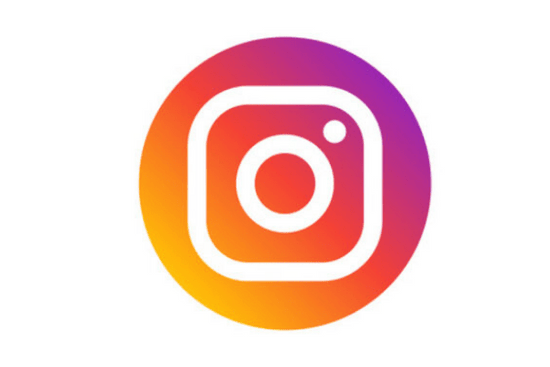You need to be exact if you are in the fishing business to catch your “marlin”. Yes luck does count, but to make the most of luck, you need to be equipped with the latest and most effective fishing gear available out there.
Fishing is not only a business, but a great sport and an involving hobby. The prey has much more to offer than just a tasty delicacy at the end of the day, the amount of perspiration it takes to catch a good fish is in itself a fulfilling endeavor.
What makes fishing a great sport is the amount of effort required for a good catch, all the planning and technique and on top of it the long wait makes the catch no less than a trophy. But for it all to come together at the right time one must be equipped with the most effective tools for the situation. The business end of your fishing gear is the hook you use, to hook up with a worthy catch, you need to have the hook that has in it all the ingredients required for the kill. But how to select the best hook for your job is an art in itself.
When walking into an apparel shop you generally have an idea about the size and type of clothing you will be purchasing, it’s simple, it either fits or it doesn’t. It’s not quite the same when you are on the hunt for the fishing hook that best suits your needs. Selecting a hook is more like walking into an electronics shop with the best of technically advanced brands on display, all items appear equally attractive, and if you are not a tech savvy person you will have a difficult time in choosing your laptop or cellphone.
This guide will help you with the basics of Hooks, and the factors that you must consider while choosing the hook for the hook-up.
Hook’s Anatomy
Eye:
The small opening on the shank of the hook, where the line is connected to the hook.
Shank:
is the relatively straight portion of the hook, extending from eye of the hook to the area where the bend starts. The shank determines the weight of the hook and the size of the bait that can be attached to the hook.
Gap or Gape:
This is the distance or opening between the shank and the point of the hook. Narrow gaps are more suitable for live bait, whereas the larger gaps are made for the thick bodied baits, these are to ensure the proper penetration into the bait and fish’s mouth.
Point:
This is the working end of the hook, the sharp pointed needle that hooks up into the mouth of the fish. They can be either like a knife-edged, needle type and/or rolled.
Barb:
It’s the protrusion that clings harder in the mouth of the fish when they try to break away.
Types of Hooks
The market is full of different types of fishing hooks, each suited for a set of species of fish. Hooks are designed differently to provide for the different bait and fish size. For instance, the Gap of the hook is kept wide for accommodation of the plastic bait whereas for the live bait hooks the gape and diameter of the hook is generally smaller. Here is a table that summarizes some of the popular types of hooks available in the market and the unique benefits each hook serves.
|
Octopus Hooks |
|
Worm Hooks |
|
Aberdeen Hooks |
|
Circle Hooks |
|
Jig or Off-set Shank Hooks |
|
Siwash Hooks |
|
Treble Hooks |
Measuring the Hooks
The sizing system of a hook is not straightforward, its based upon the combination of the size of the shank and the gape. The numbering system is such that a hook size that is followed by a zero increases in size with the increase in number, for instance 7/0 (Seven O) is one up size than 6/0 (Six O). The system is reverse for Hook numbers not followed by zero, the bigger the number of the hook the smaller the size, meaning a #3 hook is smaller in size than a number #2 hook.

The sizes of the hooks are not stringently standardized and vary a little manufacturer to manufacturer, for instance a #3 hook from one vendor might be different in size from the #3 of another vendor.
The shaft of the hook has nearly standard lengths. In case the size number of is followed by another number and an x means the shaft has a length smaller or longer than the standard one for that hook number. For example, SIZE 2x Long means the shaft is 2 times longer than the standard shaft size for that hook number.
Another usage of the letter x is to determine the wire thickness and strength of the hook compared to the standard hook strength and thickness. For instance, 2x Strong denoted hook means the wire of the hook is as thick as the next size up hook’s and 3x Strong means the wire thickness to be 2 sizes up from the current hook strength and so on.
The idea of the hook’s size selection is based upon the size of the bait and the strength of the fish. The hook must be completely camouflaged by the bait or it will scare away the fish. Hence bigger the hook larger the bait required to completely hide it.
The other factor is the strength or size of the fish to be caught. For instance for the Snapper a hook of size 1/0 to 2/0 should suffice when using keeper hooks, but when aiming for the big snapper using skipjack tuna head, a size of 10/0 to 12/0 will suffice, but when pilchards are used, the normal size to be used should be 4/0 to 5/0.
Here is a general list of the fish you can catch using the different baits available and the hook size to use:
| Bait Options | Hook Size | Fish Species |
|
Fish strip |
10 to 8 | Mini species Garfish Mackerel Mullet |
| Bread flake Maddies/Sandeel Fish strip |
6 | Garfish Mackerel Mullet Flounder |
| White Rag Small rag Lugworm Maddies |
4 |
Dab |
| Lugworm Ragworm Sandeel Squid strip Fish strip |
2 |
Pouting
|
| Shellfish Peeler crab Small bundles of white rag |
1 |
Pier Pollack |
| Lug -tipped squid Peeler crab Multi -worm Shellfish Snake whites King rag |
1/0+ |
Flounder |
| Whole squid Whole peeler Multi rag/lug Large fish fillet |
3/0+ |
Cod |
| Double squid Cuttlefish Edible peeler Mackerel head or flapper |
6/0 | Tope Bass Cod Conger |
Keep Them Sharp
An important factor that will determine the success of your day out in the sea is the sharpness of your hook. If the hook is not sharp enough to sufficiently pierce through the fish’s throat and cling on to it, it will result in lost catch and disappointment.
Not all hooks come sharp when purchased, but they can be easily sharpened once acquired. It is important that you sharpen the hooks after use, using a file or by chemical laser treatment. The factors to consider during the sharpening process are; to ensure the strength of the hook is not reduced substantially, since sharpening requires the removal of metal from the hook, it naturally weakens the hook after a certain point of time. A weak hook will break off during a fight, resulting in a loss of catch.
The choice of material also plays an important role in the effectiveness of the hooks. Most people prefer stainless steel hooks as they do not rust easily and remain intact inside both water and fish. SS hooks are softer and tend to lose the sharpness at the ends faster as compared to non-SS hooks, but again it is much easier to re-sharpen the SS hooks.
The Perfect Hook-up Using Trident Hooks
Up-to this point we have seen the different aspects of a hook that an Angler needs to know about before deciding the perfect hook for their situation. One last factor that counts the most to a successful catch is the quality of the hook.
The quality of a hook is determined by it’s strength and durability of the material and the manufacturing process used in its making.
Trident Hook is one such manufacturer that ensures that every strike counts, these hooks that will not disappoint you mid-sea.
Manufactured using laser precision cutting process makes the points of the Trident Hooks one of the sharpest in the market. Trident Hook manufactures all the major types of hooks ranging from the inline circular hook to bait buster wide gap worm hooks.
If you want to enhance your catch, reduce your lost strikes and make the most of your time out at the sea, you know where to get the best hooks in the market!



